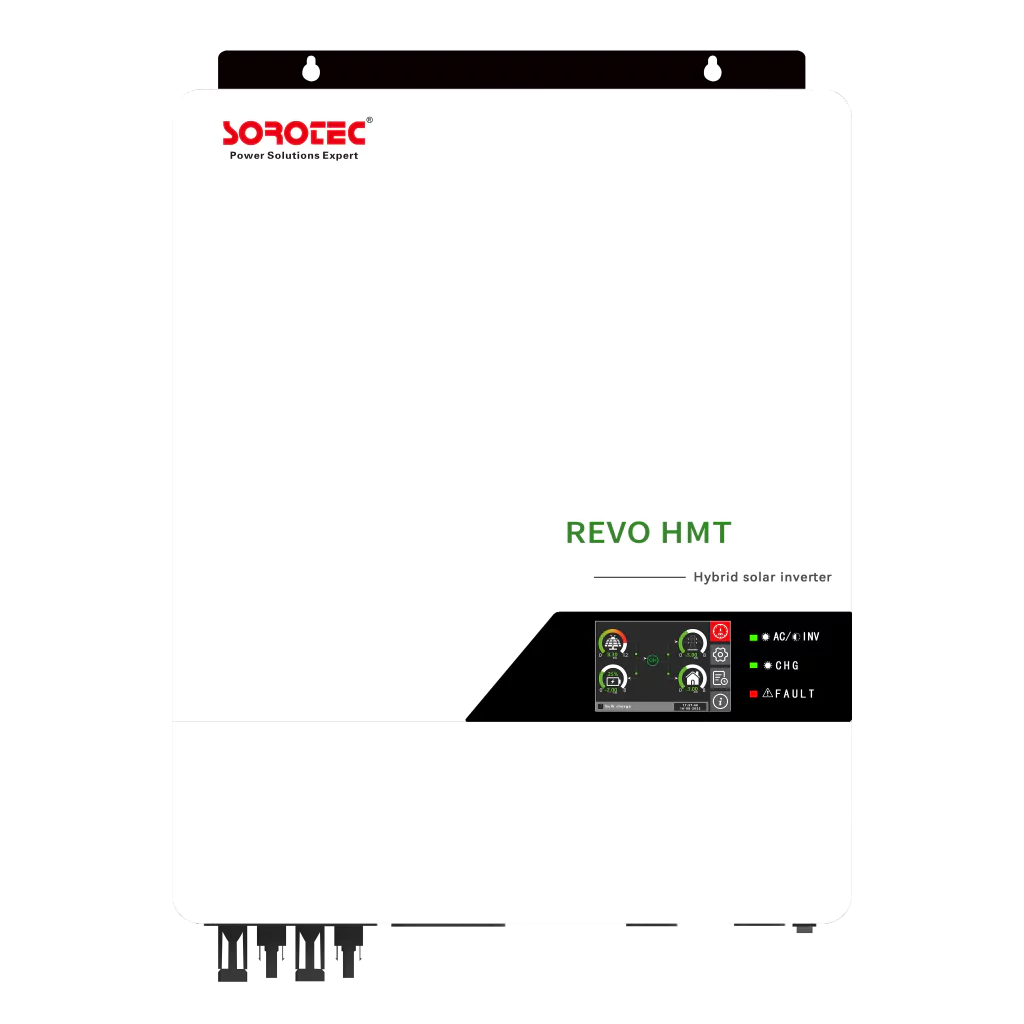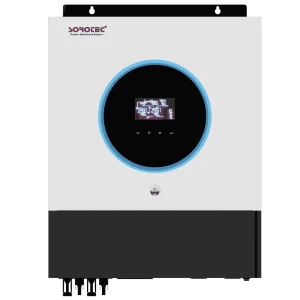When evaluating hybrid solar inverters against off-grid inverters, each type presents unique strengths and weaknesses. Hybrid models, like the PVG and GS Series, provide adaptability. They can work with or without batteries. They suit diverse settings, making them ideal for homes and businesses alike. In contrast, off-grid inverters might need more upkeep. They are less flexible in areas with grid access. Generally, hybrid inverters deliver greater adaptability and cutting-edge features. Off-grid inverters shine when total grid independence is the goal.
Understanding Hybrid Solar Inverters
Definition and Purpose of Hybrid Solar Inverters
Hybrid solar inverters are multi-purpose devices. They blend the capabilities of grid-tied and off-grid setups. These units link solar panels, batteries, and the power grid. They create a smooth energy solution. You can save solar power in batteries for use later. This ensures a steady electricity supply, even when sunlight fades.
Core Features of Hybrid Solar Inverters
Hybrid solar inverters boast several standout traits. These make them appealing to today’s energy demands. They support both grid-tied and off-grid modes. You can toggle between them based on your power needs. Their ability to handle smart loads adds to this versatility. Dual outputs allow scheduling for peak efficiency.
Connection with Grid-Tied Systems
When paired with grid-tied setups, hybrid inverters bring clear benefits. They enable self-produced and self-consumed electricity. This cuts reliance on conventional energy sources. Plus, they offer backup power during blackouts. Your essential needs stay met without disruption.
Benefits of Using Hybrid Solar Inverters
Power Efficiency and Savings
A key perk of hybrid solar inverters is their efficiency potential. They can also save money. By tapping stored solar energy during costly peak hours, you slash utility bills. These inverters also support flexible pricing plans. You can charge from the grid during cheaper off-peak times.
Versatility in Energy Control
Hybrid inverters excel in energy management flexibility. Features like remote tracking via apps or websites let you oversee usage anywhere. This adaptability helps you adjust to shifting energy needs or sudden outages quickly.
Limitations of Hybrid Solar Inverters
Upfront Cost Challenges
Despite their perks, hybrid inverters have downsides. The starting investment can be hefty. Extra parts like batteries and advanced monitoring systems drive up costs. This initial price tag might discourage some users.
Installation and Upkeep Complexity
Setting up and maintaining hybrid inverters can be tricky. These systems demand precise integration with current electrical setups. Professional installers may be needed. Regular care is also vital to keep them running smoothly over time.
Exploring Off-Grid Inverters
Definition and Role of Off-Grid Inverters
Off-grid inverters are built for places without grid access. They transform DC power from solar panels into usable AC electricity for homes. This allows total freedom from traditional energy grids.
Main Features of Off-Grid Inverters
Off-grid inverters come with impressive traits for remote use. They include battery balancing functions. These extend battery lifespan. They also handle high PV input currents, matching the trend of growing solar panel sizes.
Fit for Remote Areas
These inverters thrive in isolated spots with poor or no grid coverage. They deliver steady, reliable power. This boosts economic growth and enhances the quality of residents and companies.
Advantages of Off-Grid Inverters
Freedom from the Grid
The top benefit of off-grid inverters is their grid independence. You gain access to power even in remote spots or during long outages.
Dependability in Remote Zones
Off-grid setups offer unmatched reliability in isolated regions. These areas often deal with shaky power or steep electricity rates. Local solar energy ensures consistent performance, no matter the external situation.
Drawbacks of Off-Grid Inverters
Need for Energy Storage
Off-grid systems have flaws. A major one is the need for robust storage, like large battery banks. These must meet daily power demands without grid support.
Increased Maintenance Demands
Off-grid setups also require more upkeep than other systems. Multiple parts must work together smoothly. This can be tough under changing environmental conditions.
Comparing Performance: Hybrid vs. Off-Grid Inverters
Efficiency and Dependability Breakdown
Efficiency and reliability matter when comparing these inverters. Hybrid models blend grid-tied and off-grid features. This lets you adjust energy use based on supply and demand. It ensures a steady power flow, boosting efficiency. For homes, photovoltaic storage inverters offer flexibility and reliability. Users can generate and use their power with solar panels and storage, easing grid reliance.
Off-grid inverters focus on full grid independence. They suit remote areas with little grid access. Photovoltaic storage systems shine here too. They tackle unstable power and high costs, providing steady electricity. This supports local economies.
Cost Factors for Different Uses
Costs vary depending on your needs. Hybrid systems might demand bigger upfront spending due to extra components like batteries. Yet, they can save money long-term through smart energy use. Off-grid setups may cost less initially. However, they require heavy investment in storage for reliability when sunlight dips. This can raise maintenance expenses over time.
Choosing the Right Option for Your Needs
Assessing Power Needs and Location Limits
Picking the best inverter means reviewing your energy needs and local conditions. If your area has solid grid access but faces outages or peak rates, a hybrid system could work well. It switches smoothly between grid and self-made power. In remote spots with spotty or no grid service, an off-grid setup fits better. It offers full independence from outside sources.
Suggestions for SOROTEC Products
SOROTEC Hybrid Offerings
For versatile hybrid options, check out SOROTEC’s Hybrid Solutions. Take the On & Off Grid REVO HMT-G2 6KW as an example. It features a voltage range of 60-450VDC, 2X MPPT, dual outputs for smart load control, and customizable AC/PV usage timing. It also has a touchable button with a 4.3-inch colored LCD, RGB status lights, and a reserved port (CAN or RS485) for BMS. These products balance on-grid and off-grid use while optimizing energy via smart scheduling.
SOROTEC Off-Grid Choices
For standalone power needs, explore SOROTEC’s Off-Grid Options. These deliver solid performance in tough settings. Battery balancing extends lifespan, making them reliable even in harsh conditions.
FAQs
Q1: How do hybrid solar inverters affect energy use habits?
A: They let you store solar power for later. This optimizes use based on demand shifts and availability.
Q2: What long-term money factors come with choosing between these inverters?
A: Hybrids may cost more upfront but save via efficient management. Off-grids might start cheaper but need big storage investments over time.
Q3: How do you figure out which inverter fits your needs best?
A: Look at local grid reliability and access. Factor in your own power needs and preferences too!










